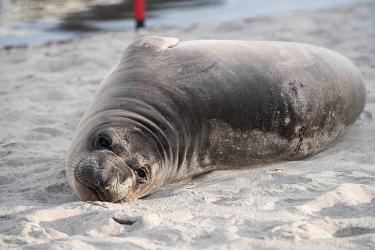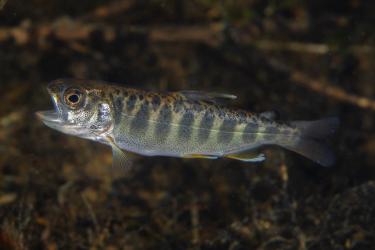The Bipartisan Infrastructure Law is one of the largest funding packages for salmon and steelhead recovery in the last decade. It promises to reopen many miles of crucial spawning and rearing habitat across the West Coast as climate change increases the urgency of recovery actions. These projects will help restore access to healthy habitat for migratory fish through:
- On-the-ground fish passage restoration
- Engineering and design
- Future project development
- Building the capacity of new and existing partners to design projects and manage multi-faceted restoration efforts
Fisheries recommended nearly $105 million for 36 fish passage projects nationally, from the Biden-Harris Administration’s Bipartisan Infrastructure Law. These new projects will reopen migratory pathways, restore access to healthy habitat for fish, and build tribal capacity to participate in developing and implementing fish passage projects. Additional competitive funding opportunities will be announced in subsequent years.
Dedicated funding is being awarded in support of Indian tribes in their role as managers and stewards of tribal trust resources for cultural, spiritual, economic, subsistence, and recreational purposes. The Tribal Fish Passage funding is intended to benefit tribally important fish passage barrier removal projects.
In NOAA Fisheries’ West Coast Region, $71 million is recommended for this year for 20 fish passage projects across California, Oregon, Washington and Idaho. The grants come from two funding opportunities, Restoring Tribal Priority Fish Passage through Barrier Removal Grants and Restoring Fish Passage through Barrier Removal Grants. Additional projects will be announced in the West Coast Region as further funding opportunities from the Bipartisan Infrastructure Law become available.
View tribal priority fish passage projects recommended for funding
$10 Million going to 7 tribal projects within NOAA Fisheries’ West Coast Region
View fish passage projects recommended for funding
$61 Million for 13 projects within NOAA Fisheries’ West Coast Region
Habitat Conservation
“NOAA’s Office of Habitat Conservation has a long history of building and supporting partnerships for habitat restoration. We execute large scale, high impact habitat actions through expert technical assistance and funding through our Community-based Restoration Program,'' says Jennifer Steger, Pacific Regional Manager for the Restoration Center in the NOAA Fisheries Office of Habitat Conservation. “NOAA is excited to continue working alongside the tribes and all our partners to support the great work they are doing to conserve and restore habitat for recovery and sustainable fisheries.”
“This investment in fish passage projects throughout NOAA Fisheries’ West Coast Region will have tremendous benefits for people, fish, and the land,” says Scott Rumsey, acting West Coast Regional Administrator. “We are fortunate to have exemplary partners in our State and local governments, tribes, non-government organizations, and local communities to help us carry this important work forward. Our partners bring their unique expertise to each project.”
Funds will be used to remove dams, improve culverts, and otherwise improve fish passage. Projects will range from Southern California to the Central Valley, and north coasts of California, to the Oregon Coast, Puget Sound, and into the Columbia and Snake Rivers. They will benefit many salmon and steelhead populations listed under the Endangered Species Act and other migratory species, such as lamprey and green sturgeon. The projects will also support resident fish like listed bull trout, and help conserve essential fish habitat for managed fisheries. Several of the selected projects will benefit Chinook salmon populations that are important prey for endangered Southern Resident Killer Whales.
“Fish passage barriers contributed to the decline of many listed species and are a risk to healthy fish populations,” says Elizabeth Holmes Gaar, Habitat Program Leader for NOAA Fisheries’ West Coast Region. “These projects are removing priority barriers and will help ensure that salmon and steelhead can reach cold, clean water that they need to build nests for spawning and for rearing juvenile fish in the face of warming river temperatures, drought, and floods influenced by climate change. It is especially important that each of these projects improves the welfare of people in the affected communities. For example, aging undersized culverts that get clogged with debris and cause flooding on roads that are essential travel ways for communities will be removed and replaced by bridges or larger culverts that will both eliminate the flood risks and allow fish to pass through them.”
Project Targets Obsolete Dam
The largest habitat restoration action in the Columbia River Basin would lay groundwork for removing the 54-foot-tall Enloe Dam in eastern Washington. It’s a major step in accessing more than 380 miles of cool, clear water along the Similkameen River. “This project is a long time in coming,” says Justin Yeager, Columbia Basin Branch Chief, for NOAA Fisheries’ West Coast Region. “The dam has blocked anadromous fish passage for 100 years and has not generated hydroelectric power since 1958.” Trout Unlimited will be conducting a planning and feasibility assessment for the removal of Enloe Dam. The project is a collaboration with the Confederated Tribes of the Colville Reservation, the Lower Similkameen Indian Band, and the Upper Similkameen Indian Band.
Bringing Fish “Back Home”
One northern California project would remove a rockfall barrier and obsolete fishway in Big Chico Creek, California. The rockfall blocks Central Valley spring-run Chinook salmon and California Central Valley steelhead from more than 8 miles of high-quality upstream habitat. Reconnecting this critical habitat provides holding, spawning, and rearing habitat, increases cold-water refuge, and aligns with NOAA Fisheries recovery plans for both species. Through all stages of the project, the Mechoopda Tribe and community members will be involved.
“The Big Chico Creek habitat restoration and fish passage project holds great promise for changing the current declines and significantly contributing to the recovery of these majestic species as well as the ecologically important lamprey,” shares Steve Edmonson, who focuses on species recovery and fish passage for NOAA Fisheries’ West Coast Region. “Bringing these fish ‘back home’ to Big Chico Creek will also reconnect the cultural and spiritual ties the people of the Mechoopda Tribe have with these animals that once sustained them and the Tribe traditionally protected and sustainably managed for millennia. The Tribe is front and center in implementing this ground-breaking project.”
Informed by Science And Community-Driven Planning
Project selection was informed by science relative to habitat restoration actions aligned with recovery plans and in support for listed and managed species. The latest science and research will support and help assess the effectiveness of restoration efforts and funds. Each species of fish has its own unique recovery plan developed in partnership with the affected community. NOAA Fisheries’ West Coast Region is completing reviews of 28 salmon and steelhead species on the West Coast. Each review highlights the highest priority recommendations for the next 5 years for each of the species.
Together, the habitat actions implemented by these partnerships will help recover endangered migratory fish and support the sustainability of commercial, recreational, and tribal fisheries. They strengthen local partnerships, create employment opportunities, improve opportunities for recreation, and enhance resilience to climate change by reducing flooding and improving outdated infrastructure.





